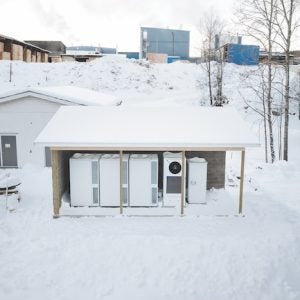
Siemens has installed an upgraded control system for the Trans Bay Cable project in San Francisco bay, a high-voltage direct current transmission system with voltage-sourced converter (VSC) technology realised in a modular multi- level converter (MMC) topology. The project includes a 53 mile HVDC cable that runs under the bay.The upgraded system will now include black start capability, enabling Trans Bay Cable, via its Pittsburg converter station, to restore electricity to the San Francisco peninsula after a severe network event, and is the first project of its kind in the USA.
Black start
This feature will allow up to 300 MWe to be directly fed into the city via the Trans Bay Cable while the remaining network is being restored. The black-start capability, which does not require the San Francisco local network to be up and running, will provide enough electricity across the city to power critical infrastructure.
“On any given day, TBC can provide about half of San Francisco’s power needs, so our ability to provide reliable, consistent electricity is extremely important,” said Steven Powell, Trans Bay Cable. “…the black-start technology, [is[ an upgrade to the system that was completed on-schedule and on-budget, which enables TBC to continue to deliver critical power during an emergency.”
“The city of San Francisco and its residents depend heavily on reliable power. That becomes even more of a priority during times of emergency, such as an earthquake or other catastrophic event, when providing power to critical systems is paramount,” said Mirko Düsel, CEO Transmission Solutions at Siemens Energy Management. “By routing emergency power directly into the city using [this] technology, Trans Bay Cable’s new black-start capability will be able to use existing infrastructure to provide emergency power during a challenging time."
MMC converter
Siemens achieves the necessary narrow footprint with an innovation – newly adapted for HVDC Plus – called the Modular Multilevel Converter (MMC). The unique multilevel topology of HVDC Plus requires no electrical filter circuits at all, says Siemens, and also contributes to achieving record-low converter losses.
Siemens’ modular multi-level converter is the world’s first to be successfully tested for black-start capability using load banks. This installation is an extension of the company’s existing partnership with Trans Bay Cable, which currently utilises Siemens’ HVDC converter station systems. The submarine cable system has helped relieve congestion and provides transmission reliability for the Bay Area, while obviating the need to site and build additional generation in a dense population centre.
The commissioning and testing of the upgraded project control system included specialised load banks from ComRent and installation by Cupertino Electric, Inc.
Project history
In September 2005, after a lengthy stakeholder process, the California Independent System Operator (CAISO) selected the Trans Bay Cable project as the best energy transmission solution to provide reliable energy to San Francisco. The link was the world’s first deployment of Siemens’ next-generation HVDC Plus technology, a transmission solution designed for space-constrained urban environments and remote sources of renewable energy.
TBC consists of an HVDC submarine cable system that runs 53 miles under San Francisco Bay to transfer power from Pittsburg to San Francisco.
The cable transmits up to 400 MW at ±200 kV from the Pittsburg converter station in the East Bay, under the San Francisco Bay, to the Potrero converter station in the heart of San Francisco. The cable, a 25.4 cm diameter bundle, was buried between 90 cm and 1.2 metres below the bay with an underwater hydroplough. The cable can transmit up to 40 % of the peak power needs for San Francisco. It came into existence as the result of burgeoning electricity demand in urban areas and an ever-increasing need for low-carbon electricity, forcing policy makers to explore innovative solutions to transmit power to population centres. Transmission solutions must be flexible, able to squeeze into congested cities, or link distant offshore wind farms to the grid.
For electrical power system planners, San Francisco presented unique and yet familiar challenges. They are unique in that the city is situated in an active seismic zone; they are all too familiar in that land is expensive, space for new power generation andtransmissioninstallationsislimited,and residents are not likely to want it there.
In San Francisco, space is especially important as a limiting factor. The city sits on the nail of the narrow isthmus of land projecting north from San Jose. With some 800 000 residents packed into just over 120 square kilometres, the population density of San Francisco is more like that found in Europe than elsewhere in the USA. “Because of its very compact design, HVDC Plus is [very suitable] for high-power transmission technology application in densely populated urban areas like San Francisco,” says Siemens CEO for Power Transmission Solutions Wilfried Breuer. Breuer says that the HVDC Plus station footprint is just a third that of competing technologies.






